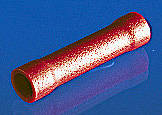Hi,
I am in the process of rennovating my lounge and have take the opportunity to sink the surface mounted electrics into the walls as well as move and add some sockets.
What I have done is move 1 double socket to another wall and added a single spur for the wall mounted TV. The double gang is on the ring main so only the single gange socket is a spur - is this OK?
Second, I've moved another socket to another wall but due to some space issues I could only get 1 cable into the wall so it is now a double gange socket spur connected to a 30amp junction box fixed to the joist under the floor.
There are two wiring colours and I have connected everything properly i.e. Red-Brown, Black - Blue and earth remains. All new wires are 2.5mm 2 core + earth and I have put a sticker on the CU saying there are 2 different wiring standards.
So, does this all sound right? As far as I can determine nothing here is notifiable, right?
Finally, I am a little concerned about the total length of the ring main - there was a lot of spare cable under the floor and I have added a bit more as I didn't realise how much there was already. Should I look to trim some of this off before I close the floor up for good?
Just need some reassurance...
I am in the process of rennovating my lounge and have take the opportunity to sink the surface mounted electrics into the walls as well as move and add some sockets.
What I have done is move 1 double socket to another wall and added a single spur for the wall mounted TV. The double gang is on the ring main so only the single gange socket is a spur - is this OK?
Second, I've moved another socket to another wall but due to some space issues I could only get 1 cable into the wall so it is now a double gange socket spur connected to a 30amp junction box fixed to the joist under the floor.
There are two wiring colours and I have connected everything properly i.e. Red-Brown, Black - Blue and earth remains. All new wires are 2.5mm 2 core + earth and I have put a sticker on the CU saying there are 2 different wiring standards.
So, does this all sound right? As far as I can determine nothing here is notifiable, right?
Finally, I am a little concerned about the total length of the ring main - there was a lot of spare cable under the floor and I have added a bit more as I didn't realise how much there was already. Should I look to trim some of this off before I close the floor up for good?
Just need some reassurance...




